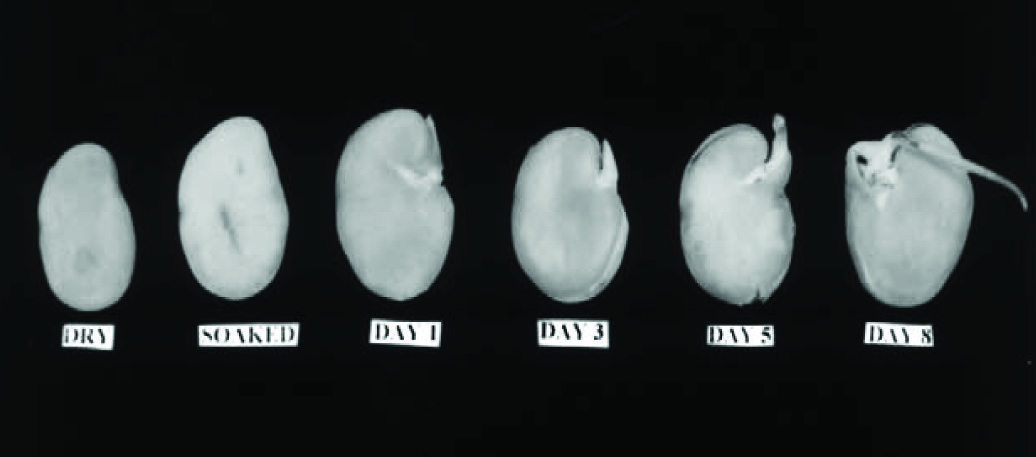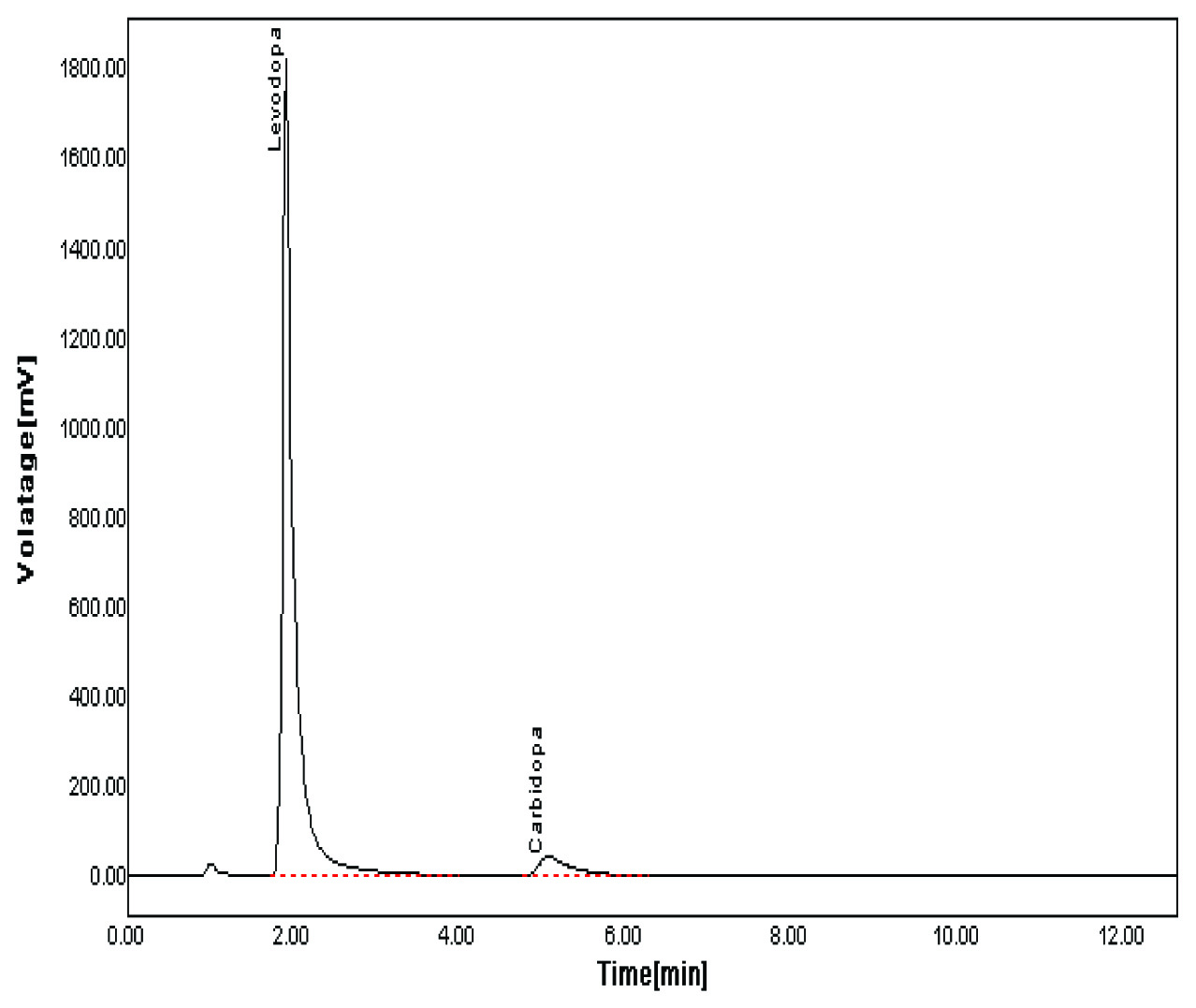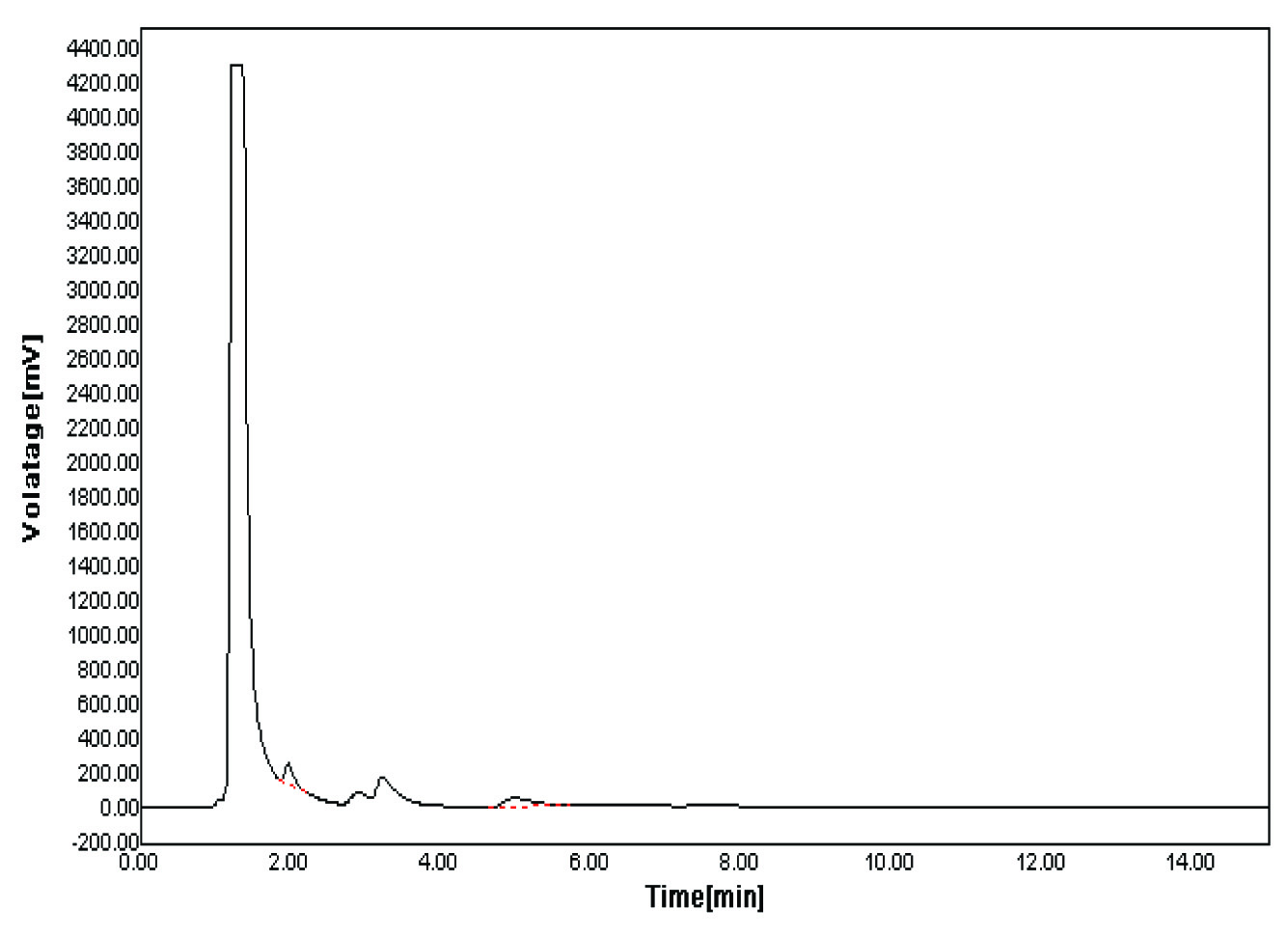Simultaneous Determination of Levodopa and Carbidopa from Fava Bean, Green Peas and Green Beans by High Performance Liquid Gas Chromatography
Mohseni Mehran S.M.1, Golshani B.2
1 Assistant Professor, Department of Physiology, Rasht Medical School (Guilan Campus), Guilan University of Medical Sciences, Raht, Iran.
2 MSc, Cheif of Chemical Section, HPLC Center, Alborz Daru, Ghazvin, Iran.
NAME, ADDRESS, E-MAIL ID OF THE CORESPONDING AUTHOR: Dr. Seyed Mohammad Mohseni Mehran, Department of Physiology, Rasht Medical School Guilan University of Medical Sciences, Rasht, Iran.
Phone: +981316690099 Fax: +981316690007
E-mail: mohsenimehran@gums.ac.ir
Introduction: According to many studies, sprouted fava beans are a rich source of levo-dihydroxy phenylalanine (L-dopa) the precursor of dopamine, and they are now being investigated for use in the management of Parkinson’s disease. The addition of Carbidopa (C-dopa) can reduce the daily use of the L-dopa dosage requirements and it can also reduce the side effects which are associated with the L-dopa administration.
Material and Methods: The present research was conducted to find the levo-dihydroxy phenylalanine (L-dopa) and Carbidopa (C-dopa) in fava beans, green peas and green beans by High Performance Gas Chromatography (HPLC). Carbidopa (C-dopa) is a peripheral decarboxylase inhibitor. As a substitution therapy, it used in combination to treat Parkinson’s disease.
Result: We obtained L-dopa and C-dopa from fava beans which were in the fresh and dry sprouted form, whose concentrations were 1.4,1.5 and 2.6,2.4 mg/ml respectively. The maximal stimulation of the L-DOPA content was seen on day 8 for the fava beans, which was 100% higher than that of the control level.
Conclusion: The results of this study indicate that faba beans are a good source of natural L-dopa and C-dopa. The quantification of this capacity according to the stage and the plant part could be suitable for applications in the food industry and in plant medicine. The consumption of fava beans can increase the levels of L-dopa and C-dopa in the blood, with a marked improvement in the motor performance of the patients with parkinson disease, without any side effects.
L-dopa (levo-dihydroxy phenylalanine), C-dopa, Fava beans, HPLC
INTRODUCTION
Vicia faba, the broad beans, fava beans, field beans, bell beans or tic beans, is a species of beans (Fabaceae) which is native to north Africa and southwest Asia such as Iran. It has an important place in the traditional diets of the Mediterranean, Indian, Chinese, English, Middle Eastern, African, South American and Iranian people [1]. In Iran, we call it Baghala. It is a unique legume because of its extremely rich nutrient content and it is also an excellent source of proteins, complex carbohydrates, dietary fibre, choline, lecithin, minerals and secondary metabolites such as phenolics. It is now gaining popularity in the new world Fava beans are rich in levo-dihydroxy phenylalanine (L-dopa) the precursor of dopamine. In addition, an increased consumption of fruits and vegetables in the diet reduces the risk of cancer, heart disease and other degenerative diseases.The quantification of its capacity according to the stage and the plant part could be suitable for applications in the food industry and in plant medicine [2,3,4]. Much attention is now being placed on the antioxidant capacity of the flavonoids and the phenolic acids. Fava beans (Vicia faba) have a high phenolic content and fava bean consumption can increase the levels of L-dopa in the blood, with a marked improvement in the motor performance of the patients, without any side effects [5–7]. The primary motor complications of the levodopa therapy are fluctuations and dyskinesias [1]. Dyskinesias have a variety of clinical forms, which includ dystonic and choreic movements. But the use of fava beans can reduce these signals [4,5].
For the dopamine biosynthetic pathways, tyrosine hydroxylase (TH), which is the first and rate-limiting enzyme, catalyzes the conversion of L-tyrosine to L-3, 4-dihydroxyphenylalanine, which is then converted to dopamine.Fava beans are now investigated for use in the management of Parkinson’s disease. Parkinson’s disease is a progressive neurodegenerative disease which is caused by an imbalance of dopamine and acetylcholine in the brain L-dopa is the standard therapy for Parkinson’s disease and its supplementation by fava bean ingestion is being explored. Fava bean consumption has been shown to increase the levels of L-dopa in the blood, with a marked improvement in the motor performance of the patients (‘ON’ period), without any side effects [8–10]. This might be due to the other products which are derived from fava beans, which probably complement the anti-Parkinsonian effect, and, therefore, L-dopa, in the natural fava bean background, was observed to show positive clinical benefits. The addition of the peripheral decarboxylase inhibitors e.g. benserazide and carbidopa provides a better treatment of Parkinson’s disease it also reduces the side effects which are associated with the L-dopa administration. Since synthetic L-dopa has side effects, a search for its natural source is becoming more significant. Fava beans is also being investigated as a dietary compliment for other diseases such as hypertension, renal failure and liver cirrhosis [11–14]. The purpose of this study was to investigate and to determine quantitatively, the levodopa (L-dopa) and carbidopa (C-dopa) which are present in fava beans, green peas and green beans by HPLC. This procedure was dependent on an effective removal of the many interfering matrix components that vitiate the HPLC analysis. Several unknown endogenous electroactive compounds which are present in Baghala, were eliminated by the purification step, or they were suppressed by the pre-treatment or the detection conditions L-dopa, combined with C-dopa, constitutes one of the most frequent medications in the treatment of Parkinson’s disease [15–17].
MATERIAL AND METHODS
Fava Bean and Dark Germination
The dry seeds of fava beans (Vicia faba), green peas and green beans (we used fresh and dry sprouted fava bean, green peas and green beans) were purchased from a supermarket in Fouman, Guilan, Iran. The seeds were soaked in distilled water for the control and in distilled water. Approximately 10 g seeds were placed in 500 ml of the soak solution in 1000 ml conical flasks. The flasks were then placed in a rotary shaker at 150 rpm for 24 hrs. The pre-soaked seeds were washed in distilled water and they were germinated in flats which were lined with moist paper towels. The flats were covered with aluminum foil and the seeds were germinated in the dark [Table/Fig-1]. The germinating seeds were kept moist with distilled water and the assays were performed daily for the next 8 days. After 8 days of germination, the hypocotyls, the etiolate and the first pair of leaves emerge. The bean sprouts are thus marketable during the first week of the dark germination. With respect to the [Table/Fig-2] you can see the amount of L-dopa and C-dopa in fava bean at condition of fresh and dry (L-dopa,1.43-1.51 mg/ml and C-dopa, 2.67–2.47 mg/ml). At [Table/Fig-3&4] chromatogram of standard and sample have been shown with flow rate of 1ml/min.
Different Stages of Fava bean germination (from left to right: Dry seed, Soaked, Day 1, Day 3, Day 5 and Day 8)

Concentration of levodopa and carbidopa in aquous & alcoholic solution in Fava bean
| Solution | Levodopa (mg/mL) | Carbidopa (mg/mL) |
|---|
| Fresh bean | Dry bean | Fresh bean | Dry bean |
|---|
| Water | 1.43 | 1.51 | 2.67 | 2.47 |
| Ethanol | 0 | 0.65 | 0 | 0.15 |
Control chromogram with Retention time (min) 1.91 for L-dopa (USP) and Retention time (min) 5.06, young 280 column chromatography. Flow rate: 1 ml/min. Fraction size: 0.8 ml.

Chromatogram of Sprouted Fava bean after 8 days. The maximum concentration of L-dopa and C-dopa

High Performance Liquid Chromatography Analysis
For the solid-state bioconversion studies, 10 grams of finely ground fava beans was taken in a dark and moist cloth and it was put to sprout in a petri plate. At 8-day intervals, the samples were extracted. One hundred millilitres of distilled water in the first group and one hundred ml of ethanol 95% in the second group were added to the fava bean extract and it was homogenized for 1 min by using a waring blender. It was then centrifuged at 15 000g at 4°C for 20 minutes.
Ten millilitres of the fava bean water extract was evaporated at room temperature and the residue was dissolved in 10 ml of buffer solution (32 mM citric acid, 54.3 mM sodium acetate, 0.074 mM EDTA, 0.215 mM octyl sulfate pH 4). This solution was filtered through 0.45 mm disposable syringe filters.
High Performance Liquid Chromatography (HPLC) was performed by using a Young (south Korea) chromatography which was equipped with a Variable Wavelength Detector (VWD 1100). The analytical column was a reverse phase Waters C18, 280 nm C18, 4.6 mm with a packing material of 5 mm particle size. The samples were eluted at a rate of 1ml/min in an isocratic manner, with a mobile phase which was prepared according to the United States Pharmacopeia (USP) protocol. First, Sodium 1-decanesulfonate solution–Dissolve 0.24g of Sodium 1-decanesulfonate in 1L of water Mobile phase – Mix 11.04 g of monobasic sodium phosphate and 950 mL of water in a beaker. Add 1.3 ml of the sodium 1-decanesulfonate solution, and adjust with phosphoric acid to a pH of 2.8. Transfer to a 1-l volumetric flask,dilute with water to get the total volume, and pass through a membrane filter Standard preparation – Transfer about 50 mg of L-dopa USP (United States pharmacopeia) which was accurately weighed, to a 100 ml volumetric flask. Add an accurately weigh quantity of Carbidopa USP (United states pharmacopeia), which is in a ratio with L-dopa USP. Add 10 ml of 0.1 N phosphoric acid. Warm gently the dissolve the s tandards.Dilute with water to get the total volume, and mix. Chromatographic system – the liquid chromatography phase was equipped with a 280-nm detector and a 3.9mm x 30cm column that contained packing L1. The flow rate, (about 2ml per minutes), was adjusted until the retention times for Levodopa and C-dopa were about 4 minutes and 11 minutes, respectively.Chromatography five replicate injections of the standard preparation, and record the peak responses as directed for the procedure: the relative standard deviation was not more than 2.0%; and the resolution factor between L-dopa and C-dopa was not less than 6. Procedure–Separately inject equal volume s (about 20 μl) of the standard preparation and the assay preparation into the chromatograph by means of a suitable microsyringe. Record the chromatograms, and measure the responses for the major peaks.Calculate the quantity, in mg /mL of L-dopa) and C-dopa in the solution by using this formula. Assay(mg/mL)= (Area sample/Area standard)*(Weight of standard)*20.
RESULT
This study was based on the HPLC, which is a reliable laboratory method for measuring the L-dopa ,and C-dopa from fava beans (Baghala), green peas and green beans. HPLC was done on the solutions which were made from the actual samples of these three substances. But only fava beans was confirmed that have L-dopa and C-dopa. This result led us to focus more on the fava beans plant. To reach our goal, we prepared different solutions of fava beans, such as,
Fresh fava beans with the outer shell
Fava beans which was dissolved in alcohol and water
Dried fava beans which was sprouted
DISCUSSION
According to our study, fava beans are rich in levo-dihydroxy phenylalanine (L-dopa), the precursor of dopamine and Carbidopa (C-dopa) are being investigated for use in the management of Parkinson’s disease. Large quantities of fava beans have to be administered to meet the required quantities of L-dopa ,which can causes flatulence in patients. Clinical studies have shown that in the treatment of Parkinson’s disease, the consumption of unsprouted fava beans in large quantities in order to get the desired amount of L-dopa, caused flatulence in the patients. Hence, the consumption of just the elicited and sprouted fava beans with a high L-dopa and a phenolic content, which is cheap and readily available, would be a better option. The above experiments give an understanding properties Moreover, since synthesized L-dopa has side effects, the search for a natural concentrated source is becoming more significant and necessary. The present research was conducted to enrich the fava bean substrate with C-dopa and L-dopa via a solid-state bioconversion system Enhanced levels of L-dopa were observed during the early fermentation stages of the fava beans, (day 1-8, fresh and dried 0.65-1.51mg/ml) and these declined during the later stages of the fermentation. Maximal amounts of the L-dopa and the C-dopacontents were seen on day 8 for the fava beans which were treated, which were 100% higher than those of the control content. In others it is extended to day 14. They have tremendous applications in the prevention and treatment of highly prevalent human diseases such as cardiovascular disease, cancer, and Parkinson’s disease [18]. In our study ,With regards to the [Table/Fig-2] we found, in addition to (L-dopa) with concentration of 0.65-1.51mg/ml and 0.15–2.47 for c-dopa in fresh and dried Fava bean.This concentration is the same as that which is reported in other studies but the main point (which can be seen in [Table/Fig-2] is thatC-dopa can be obtained from naturally dried and sprouted fava beans not founded naturally and more prepare synthetically in chemical laboratory.
[1]. Lorestani Ali Nejat, Ghari Morteza, Mass modeling of Fava bean (vicia faba L.) with some physical characteristicsScientia Horticulturae 2012 133:6-9. [Google Scholar]
[2]. Chaieb Nadia, González Johannes Luis, López-Mesas Montserrat, Bouslama Mohamed, Valiente Manuel, Polyphenols content and antioxidant capacity of thirteen faba bean (Vicia faba L.) genotypes cultivated in TunisiaFood Research International 2011 44:970-77. [Google Scholar]
[3]. Randhir Reena, Shetty Preethi, Shetty Kalidas, /L-DOPA and total phenolic stimulation in dark germinated fava bean in response to peptide and phytochemical elicitors/Process Biochemistry 2002 37:1247-56. [Google Scholar]
[4]. Fabbrini Giovanni, Brotchie Jonathan M., Grandas Francisco, Nomoto Masahiro, Goetz Christopher G., Reviews Levodopa-Induced DyskinesiasMovement Disorders 2007 22(10):1379-89. [Google Scholar]
[5]. Liu XX, Wilson K, Charlton CG, Effects of L-DOPA treatment on methylation in mouse brain: implications for the side effects of L-DOPALife Sciences 2000 66:2277-88. [Google Scholar]
[6]. Rabey JM, Vered Y, Shabtai H, Graff E, Korczyn AD, Improvement of Parkinsonian features correlate with high plasma levodopa values after broad bean (Vicia faba) consumptionJ Neurol Neurosurg Psychiat 1992 55:725-27. [Google Scholar]
[7]. Apaydin H, Broad bean (Vicia faba) – A natural source of L-DOPA-prolongs ‘on’ periods in patients with Parkinson’s disease who have ‘on–off’ fluctuationsMovement Disorders 2000 15:164-66. [Google Scholar]
[8]. Vered Y, Grosskopt I, Palevitch D, Harsat A, Charach G, Weintraub MS, The influence of Vicia faba (Broad Bean) seedlings on urinary sodium excretionPlant Medica 1997 63:237-40. [Google Scholar]
[9]. Spengos M, Vassilopoulos D, Improvement of Parkinson’s disease after Vicia faba consumptionBook of Abstracts, Ninth International Symposium on Parkinson’s disease 1988 46 [Google Scholar]
[10]. Shetty P, Athalla M, Shetty K, Enhancement of phenolic content, L-DOPA and antioxidant activity in germinating fava beans in response to bacterial elicitorsFood Biotechnol 2001 15:47-67. [Google Scholar]
[11]. Kwok D, Elsworth JD, Roth RH, Dopamine synthesis, uptake metabolism, and receptors: relevance to gene therapy of Parkinson’s diseaseExperimental Neurology 1997 144:4-9. [Google Scholar]
[12]. Rabey JM, Vered Y, Shabtai H, Graff E, Korczyn AD, Improvement of Parkinsonian features correlate with high plasma levodopa values after broad bean (Vicia faba) consumptionJournal of Neurology Neurosurgery and Psychiatry 1992 55:725-27. [Google Scholar]
[13]. Randhir R, Shetty P, Shetty K, L-DOPA and total phenolics stimulation in dark germinated fava bean in response to peptide and phytochemical elicitorsProcess Biochemistry 2002 37:1247-56. [Google Scholar]
[14]. Randhir R, Shetty K, Microwave-induced stimulation of L-DOPA, phenolics and antioxidant activity in Fava bean (Vicia faba) for Parkinson’s DietProcess Biochemistry 2003 [Google Scholar]
[15]. Shetty P, Atallah MT, Shetty K, Effects of UV treatment on the proline-linked pentose phosphate pathway for phenolics and L-DOPA synthesis in dark germinated Vicia fabaProcess Biochemistry 2000 37:1285-95. [Google Scholar]
[16]. Shetty P, Athalla MT, Shetty K, Enhancement of phenolic content, L-DOPA and antioxidant activity in germinating fava beans in response to bacterial elicitorsFood Biotechnology 2001 15:47-67. [Google Scholar]
[17]. Milazzo MC, Zheng Z, Kellett G, Haynesworth K, Shetty K, Stimulation of Benzyladenine-induced in vitro shoot orangogenesis and endogenous proline in melon by fish protein hydrolysates in combination with proline analoguesJ Agric Food Chem 1999 47:1771-75. [Google Scholar]
[18]. Randhir Reena, Vattem Dhiraj, Shetty Kalidas, Solid-state bioconversion of fava bean byRhizopus oligosporus for enrichment of phenolic antioxidants and L-DOPA/Innovative Food Science and Emerging Technologies 2004 5:235-44. [Google Scholar]